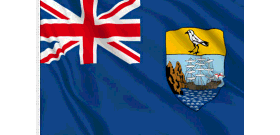 Which planes can actually land at St Helena Airport?
Which planes can actually land at St Helena Airport?
Saint Helena has welcomed its latest arrival. Yesterday, a Titan Airways Boeing 757 touched down at the airport as the first direct flight from London. To mark the occasion, we thought we would take a look at which aircraft are actually capable of landing at this beautiful location.
Titan’s B757 arrives again
Yesterday, UK charter company Titan Airways touched down in Saint Helena with its Boeing 757 aircraft. The plane, a twenty-year-old B757-256 registered G-ZAPX, is undertaking Titan’s latest charter operation to the South Atlantic island. It left London Stansted at 02:26 in the morning, stopped at Accra at 07:34 to refuel and finally touched down in HLE at 13:13 yesterday lunchtime.
This time, the flight was additionally notable because the aircraft flew direct, save for a fuel stop. The last time Titan operated one of these charters to Saint Helena, it first stopped overnight on Ascension Island before continuing on.
Today's charter flight #TitanAirways 757-200, landing at #StHelena from UK, via Accra, Ghana. More wind today than this aircraft's first visit in July, but looked lik#avgeek pic.twitter.com/LUcbE0fjbk — What The Saints Did (@SaintsDidNext) September 16, 2020
For an airport that had previously been primarily served commercially by the Embraer 190 of SA Airlink, the 757 is a big step up. It’s the second time the 757 has successfully landed at HLE, showcasing that it’s not just small aircraft that can serve this out of the way airfield. So which planes can actually land at the airport once cruelly and incorrectly dubbed ‘the world’s most useless airport’?
Which aircraft can land at Saint Helena?
When Saint Helena was designed, it was planned to accommodate aircraft no larger than a 737-700 or Airbus A319. But, in 2013, the Saint Helena government along with construction company Basil Read undertook some modifications to allow larger aircraft to land.
Following the addition of wider runway shoulders, extensions and turning circles, the airport now boasts a concrete runway of some 1,950 metres and a Landing Distance Available (LDA) of 1,550 metres. This makes it possible for Code D aircraft to land, including the Lockheed C-130 Hercules and the Boeing 757.
In essence, any aircraft up to and including the size of the Boeing 757 can land at Saint Helena. The Embraer E jets are ideally suited to the conditions at HLE, due to their tolerance for tailwinds, but that doesn’t mean other aircraft will struggle. Airport CEO Gwyneth Howell explained that, because Saint Helena is a category C airport, preparation is needed for any arriving aircraft, regardless of its size. She said,
“If pilots haven’t been trained in category C conditions, which is unusual or sometimes challenging approaches, and they fly in here unprepared, then they’ll actually get quite a surprise. The pilots that come here have been trained. They know what to expect, they know when to expect it.”
What are airport categories?
While there are a number of ways to classify airports, one of the key categorizations for an airport like Saint Helena is its landing category. A risk assessment based on various data points designates every airfield as either category A, B or C.
For an airport to be designated as category A, it must meet some strict criteria. These include:
Night operations capability At least one runway with no performance limited procedure for landing and take off An approved instrument landing procedure Circling minimum of no higher than 1,000 feet
Any airport that is classified as category A is one of the easiest to land at out there. For category B, there may be some elements that make it slightly out of the ordinary. These airports either can’t tick all the boxes to be a category A airfield, or there are some special considerations, for example,
However, what really gets a pilot’s blood pumping is landing at a category C airport. These airports often have the most stunning looking but mentally challenging approaches involved. The issues surrounding these airfields are often unique to each one, but there are some notable examples in Europe.
Innsbruck in Austria is widely considered one of the most beautiful approaches in the world. However, its valley location with high terrain on all sides means its challenging visually and sometimes experiences low-level turbulence. Gibraltar has limited landing and take-off weights due to its short runway and can experience unusual wind effects due to the nearby ‘Rock’.
One of the most well-known category C airports in Europe is London City, which has a limited number of aircraft able to land there. The high buildings around it mean the approach is made at a steep 5.8 degrees, as opposed to the usual three-degree glide path.
That doesn’t mean pilots don’t love landing at these airports. In fact, speaking to the Independent a few years ago, Captain Dave Prior, director of safety and security for easyJet, commented, “Pilots love Cat C airports. It’s what we’re paid to do.”
